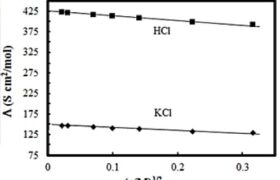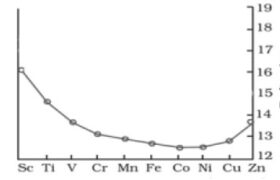Commerce Coaching Center in Chandigarh At Topper’s Choice, we believe in empowering students to excel in their academic journey and prepare them for a promising future. Specializing in 11th and 12th Commerce Coaching Center in Chandigarh, we are committed to delivering top-notch education in Mathematics, Economics, Accounts, and Business Studies. Conveniently located in the vibrant city of Chandigarh, we cater to the needs of ambitious students aiming for excellence in their commerce studies.

Why Choose Topper’s Choice for 11th and 12th Commerce Coaching?
Transitioning into the 11th grade is an exciting yet challenging phase. The curriculum becomes more detailed and demanding, requiring students to move beyond superficial understanding to grasp deeper concepts. At Topper’s Choice Commerce Coaching Center in Chandigarh, we provide the support and guidance necessary to navigate this new academic landscape with confidence.
Our Comprehensive Coaching for 11th Commerce Coaching Center in Chandigarh:
Subjects Offered:
- Mathematics: We simplify complex concepts and enhance problem-solving skills, making Math not just understandable but enjoyable.
- Economics: Dive into the world of economics with our comprehensive tutorials that cover both micro and macroeconomic principles.
- Accounts: Gain a solid foundation in accounting principles, crucial for understanding financial statements and business transactions.
- Business Studies: Explore the fundamentals of business, management, and entrepreneurship, equipping you with knowledge that’s applicable in real-world scenarios.
Why 11th Grade Matters:
11th grade sets the stage for your entire commerce stream journey. It’s crucial to establish a strong foundation during this year as it prepares you for the complexities of the 12th grade and beyond. Our expert faculty focuses on building this foundation, ensuring that you are well-prepared for future academic challenges.
Expert Coaching for 12th Commerce in Chandigarh:
As you step into the 12th grade, the pressure to perform well increases. This year is pivotal as it not only concludes your school education but also lays the groundwork for your higher education and career path. At Topper’s Choice Commerce Coaching Center in Chandigarh, we understand the significance of this year and provide focused, result-oriented coaching.
Subjects Offered:
- Mathematics: Our targeted approach helps students tackle advanced topics and excel in board exams.
- Economics: We delve deeper into economic theories and their applications, preparing students for higher studies in economics.
- Accounts: Advanced accounting concepts are made simple, preparing students for exams and future professional courses like CA.
- Business Studies: Our curriculum covers critical aspects of business management and organizational behavior, essential for aspiring business professionals.
Why 12th Grade Matters:
Your performance in the 12th grade Commerce Coaching Center in Chandigarh can significantly influence your future opportunities. From university admissions to scholarship considerations, your 12th-grade results play a crucial role. Our coaching is designed to help you excel and achieve the best possible outcomes.
Why Topper’s Choice Stands Out:
- Experienced Faculty: Our team of dedicated educators brings years of teaching experience and subject matter expertise to the classroom.
- Personalized Learning: We understand that every student is unique. Our coaching is tailored to meet individual learning styles and needs.
- Comprehensive Study Material: We provide well-structured and up-to-date study material to ensure students have all the resources they need to succeed.
- Regular Assessments: Frequent tests and assessments help track progress and identify areas for improvement.
- Supportive Environment: We foster a positive and encouraging atmosphere, motivating students to reach their full potential.
Join Us at Topper’s Choice Today!
Embark on your journey to academic excellence with Topper’s Choice. Our commitment to quality education and student success makes us the best choice for 11th and 12th Commerce coaching in Chandigarh.
Watch our introductory video to learn more about our coaching center and how we can help you achieve your academic goals: Topper Choice – Best Commerce Coaching in Chandigarh.
Visit our website at www.topperchoice.in to learn more about our programs, faculty, and how we can help you achieve your academic goals.
Contact Us:
Phone: 0172 450 8826 ,+919988590021
Email: tcsco7640@gmail.com
Address: Second Floor, S.C.O, 76, Sector 40C, Sector 40D, Chandigarh, 160036
Related Post
Best Coaching Institute for Neet in chandigarh
Leading NEET Coaching Institute in Chandigarh
FAQs for 11th and 12th Commerce Coaching at Topper Choice
What subjects do you offer for 11th and 12th Commerce students at Topper Choice?
We offer comprehensive coaching in Mathematics, Economics, Accounts, and Business Studies for both 11th and 12th Commerce students. Our curriculum is designed to provide in-depth understanding and practical knowledge in these subjects.
How does Topper Choice help students transition from 10th to 11th grade in Commerce?
Transitioning from 10th to 11th grade involves moving to a more detailed and specialized curriculum. At Topper Choice, we provide tailored coaching that focuses on building a strong foundation in core commerce subjects, ensuring students adapt smoothly and excel academically.
What makes your 12th Commerce coaching program effective for board exams?
Our 12th Commerce coaching program is effective due to our experienced faculty, structured study materials, and regular assessments. We focus on deep understanding and exam-oriented preparation, helping students achieve high scores in their board exams.
Do you offer personalized coaching for students with different learning needs?
Yes, we understand that each student has unique learning needs. At Topper Choice, we offer personalized coaching to cater to individual learning styles, ensuring that every student gets the attention and guidance they need to succeed.
How can I enroll in Topper Choice's Commerce coaching programs?
You can enroll by visiting our website www.topperchoice.in or contacting us directly via phone or email. We provide detailed information about our programs, schedules, and the enrollment process to help you get started.


